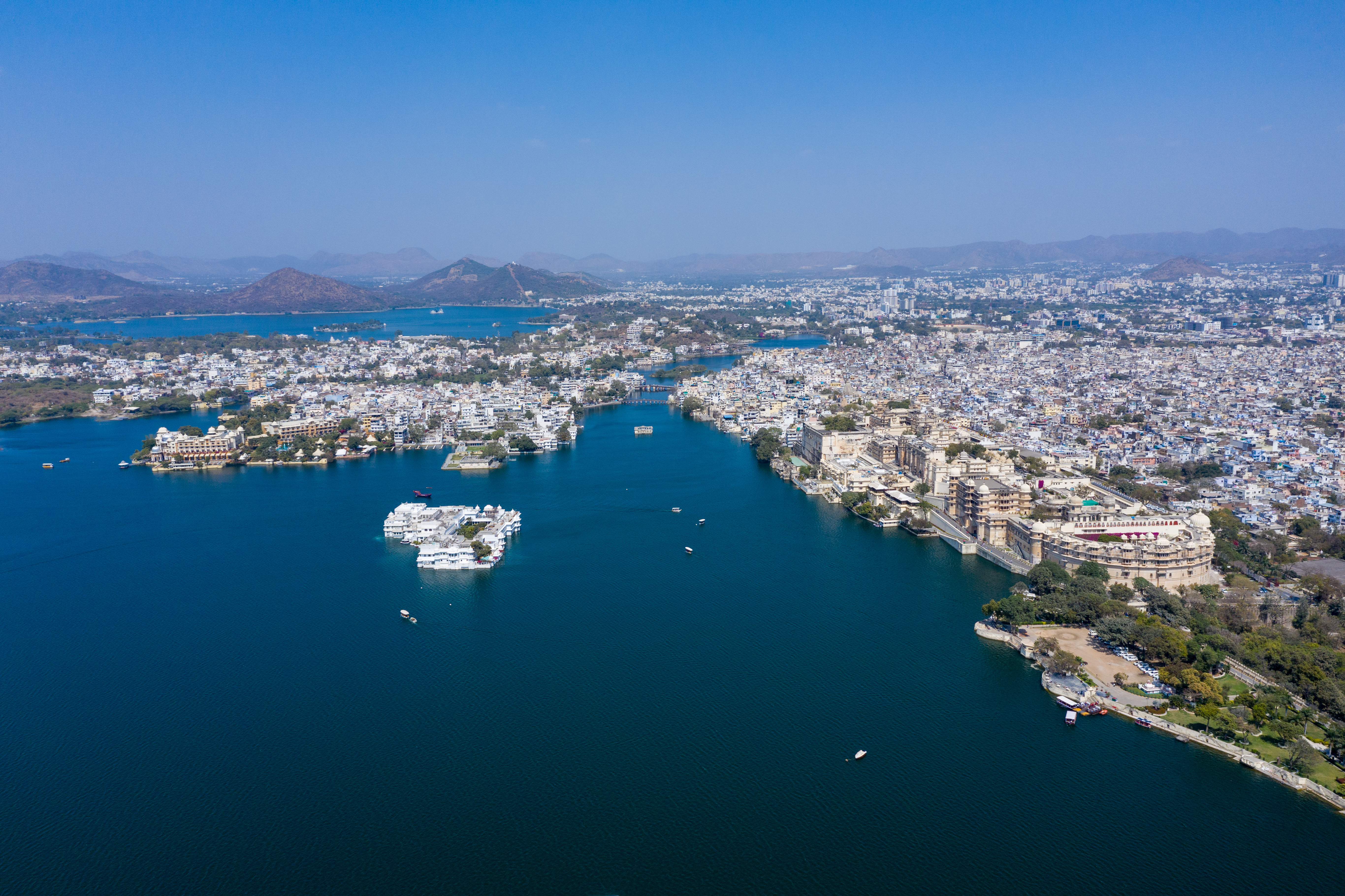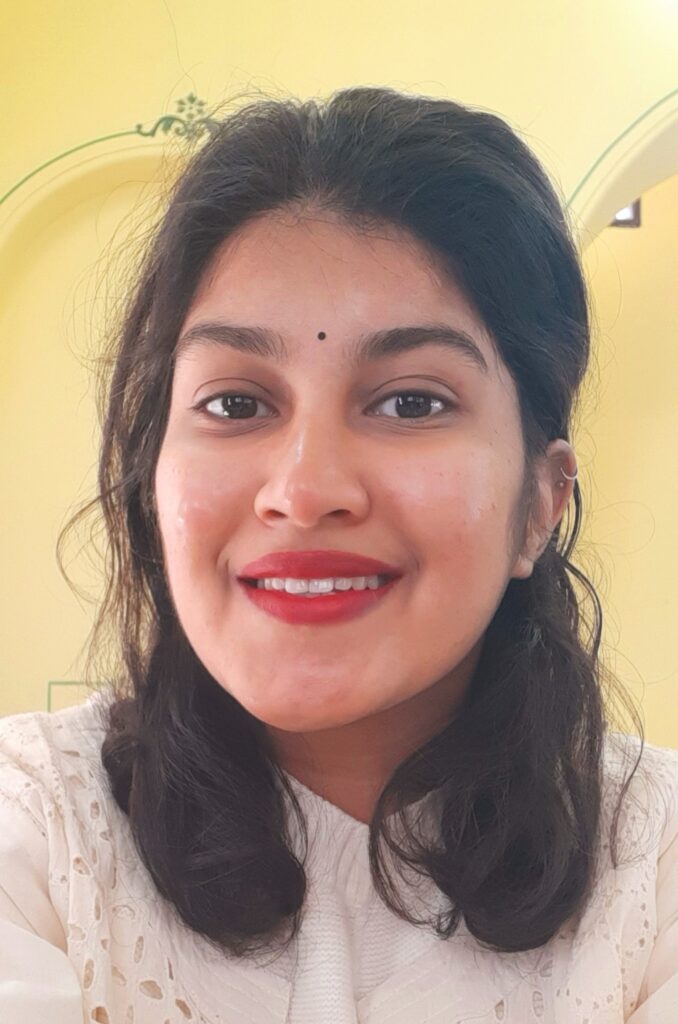Aerial view of The City Palace Museum, Udaipur ©MMCF
In 1559 CE, Maharana Udai Singh II (r. 1537-1572) made a shift in capital from Chittorgarh to Udaipur. These regions, formerly a part of the Princely State of Mewar, today fall under the Indian State of Rajasthan.
The Royal abode of Mewar lies nestled amidst the Aravalli ranges, positioned upon a hill, with pristine water bodies nearby. Visual material such as paintings that document the early times show the space thriving with activity. People and episodes captured in these mediums tell us that such spaces were not exclusively for Royals or noblemen, large portions were in fact reserved for public gatherings and festive fanfare. Entertainment in the form of wrestling, elephant fights, or performances by musicians and dancers were common. One can only try and imagine how the space may have reverberated in festive times, with colour-throw, song and dance, and gatherings by the hundred. Of course, this wasn’t contained solely within the Palace Complex and often extended beyond, to the spaces that lay in its periphery.
With Independence, the region witnessed new socio-economic and political circumstances, with Mewar being merged into Independent India. The farsighted Maharana Bhagwat Singh Mewar (1955-1984), converted portions of the large palatial structures in his possession into economically sustainable assets such hotels and museums. The City Palace Museum, Udaipur, supported under the aegis of the Maharana of Mewar Charitable Foundation, came about through his efforts towards keeping the legacy of the House of Mewar and its people alive.
The Trust, under the guidance of its Chairman and Managing Trustee, Shriji Arvind Singh Mewar, the 76th Custodian of the House of Mewar, works towards this goal. In several ways, the museum continues to function as a cultural hub. Age-old traditions such as horse worship (Ashwa Poojan) and lighting of the effigy of Holika (Holika Dahan) are practiced till date, with changing demographics and people from far and wide joining in to celebrate the festivals with great gusto!
Not only does the space transcend into a scene of the yesteryear, but it is also interesting to see museum objects intermingle with these events; transitioning from secular to sacred as they are utilized in royal processions or ritual worship. The Ram Rewari, a portable shrine in the Museum’s collection is one such example, taken out on the occasion of Jal Jhulni Ekadashi, for ritual use.
The City Palace has a lot to offer as a heritage site and museum in the 21st century as it incorporates both traditional techniques & knowledge systems, and modern means, to care for its building and collections.
Generations-old artists and craftspeople associated with the palace are patronized as part of the City Palace Museum’s projects, such as the biennial World Living Heritage Festival, one can witness performances, participate in traditional workshops, go on a historic walking tour, or shop at the Arts and Crafts Bazaar.
The hub now extends to include a virtual audience that appears eager to learn traditional ways; be it Mewar or Phad Painting, use of Lime or Araish on buildings, or exploring the military weapons in the collection. The museum also works with scholars and history enthusiasts that bring in different perspectives to the existing spaces and collections.
The space therefore continues to work as a cultural hub, albeit with new definitions. As a Palace, it continues to celebrate its rich history & culture, and engage people, but as a museum, it has certain limitations in doing so. As a historical site, it has been transformed with its change in context i.e. from a Palace to a Palace Museum. One has to weigh the pros and cons effectively in such situations, assuring that there is a balance between conservation of the site & the collections it contains, and the facilitation of age-old traditions that continue to happen there.
As a museum, the art once restricted to a few is now viewable to all. The museum-going audience is now the patron, with needs and wants. The museum charges a fee from its visitors in order to sustain itself, care for its collection and maintain the site. In return, it puts an effort at making its formerly not-so-easily-accessible premises accessible. Modern-day photography captures how these spaces are being utilized, while the vintage photographs and paintings in the museum galleries show visitors how markedly different and yet similar the palace’s former existence was.
As a custodian of this space, each of us continues the traditions in our own unique way, considering our audience to be an equal stakeholder; after all, time is transient, and each of us are short-term contributors to the long history of this cultural hub.
About the Author
Chelsea Santos is Assistant Curator at The City Palace Museum, Maharana of Mewar Charitable Foundation, Udaipur. She is passionate about access, inclusion and community engagement, and loves creating resource material and engaging content for, and with, her audiences.









Recent Comments